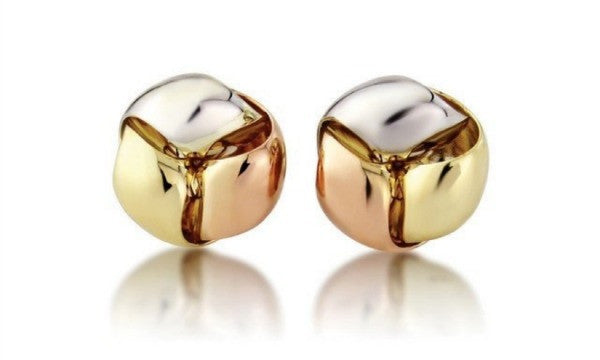Good things come in threes

Two’s company three’s a crowd certainly doesn’t apply when it comes to buying gold. Ever wondered why you find that gold comes in various different colours, predominantly gold, rose gold and white gold? The simplest answer is that pure 24 carat gold is extremely soft to work with; therefore gold is combined with other metals to create a more durable alloy more suited to wearing as jewellery. Gold alloys can including silver, copper, zinc, manganese, palladium and platinum, all having different effects on the colour and durability of the gold in your jewellery.
Gold Carats
Gold is measured in carats, so, pure gold is made up of 24 carats, but is so soft that you can easily mark it by hand. 18 carat gold is made up of 18 parts of pure gold per 24 parts of metal and 9 carat gold to a ratio of 9/24. Therefore the UK standards of 18 and 9 carat gold contain 75% and 37.5% of pure gold respectively and are hallmarked accordingly.
White Gold
If you are buying a white gold piece of jewellery you could see anything from a light silver shade to a darker gunmetal tone depending on the alloy but the majority of white gold is also finished with rhodium to leave the piece with a bright white polish.
Gold
Gold has always been desired for its unique warm tones and remains a leading global commodity. It is often used with gem stones to add depth and colour to a finished piece of jewellery.
Rose Gold
Another variation to the family is rose gold, sometimes called red or pink gold. As a rule of thumb, the more copper used in the alloy the more rose, pink or red it will be. Rose gold has romantic vintage appeal but now has a firm hold on contemporary jewellery design.
So whether you are coming up roses, basking in sunshine or looking chic with silvery tones, there is a gold out there for everyone. And for those that can’t decide? All three complement each other beautifully, as seen below!

